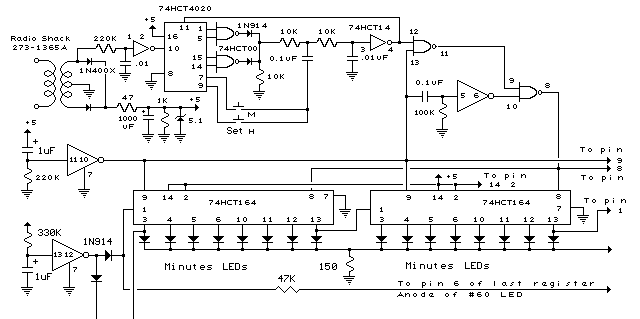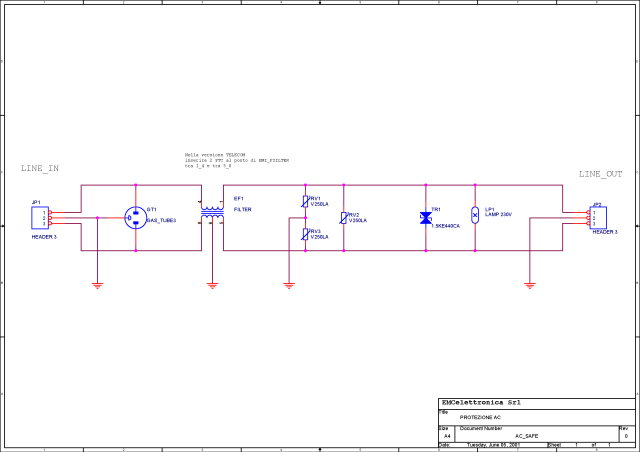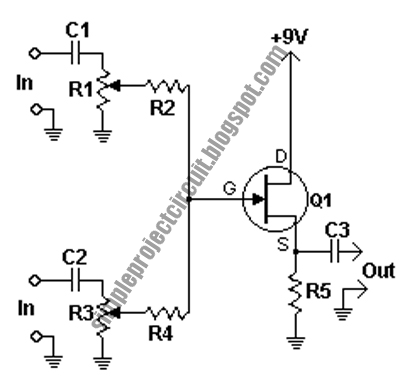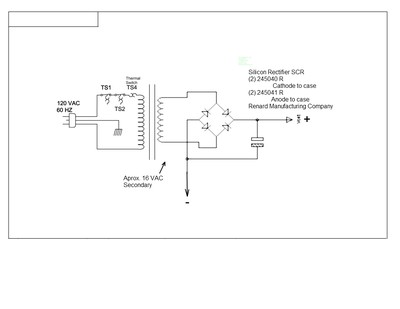
PTC phase asynchronous motor circuit protection one
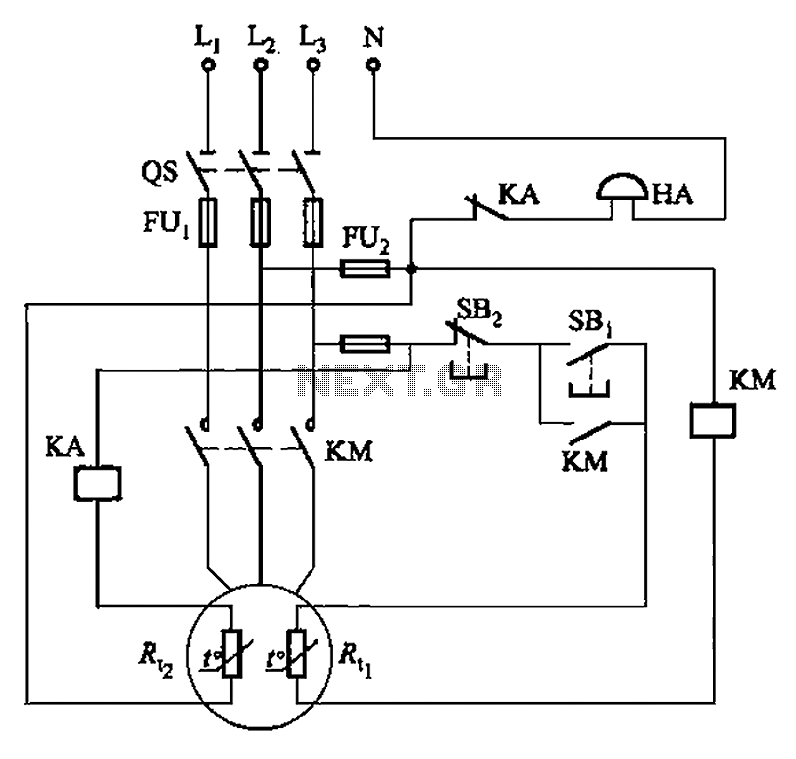
The circuit illustrated in Figure 4-2 employs two thermal resistors. One, designated as Rc, functions as overload protection, while the other, labeled Rt, serves as an alarm.
The circuit in question integrates two thermal resistors to monitor temperature changes and provide protective and alert functions. The first thermal resistor, Rc, is designed to activate when excessive current or temperature is detected, thereby protecting the circuit from potential damage due to overload conditions. This resistor is typically connected in series with the load, allowing it to sense the thermal rise caused by increased current flow. When the temperature exceeds a predetermined threshold, Rc triggers a mechanism, such as a relay or a circuit breaker, to disconnect the load and prevent overheating.
The second thermal resistor, Rt, is utilized as an alarm system. It is calibrated to respond to different temperature levels than Rc, allowing it to signal when the system is approaching critical operational limits. This can be achieved by connecting Rt to a microcontroller or an alarm circuit that activates a visual or audible alert when the temperature reaches a specific set point. The alarm provides an early warning to operators, enabling timely intervention before any damage occurs.
In terms of configuration, both thermal resistors should be selected based on their resistance-temperature characteristics, ensuring they respond accurately to the expected temperature range of the application. The placement of these resistors within the circuit is crucial; they should be positioned where they can effectively sense the thermal variations without being influenced by external factors. Proper calibration and testing of the thresholds for both Rc and Rt are essential for reliable operation.
Overall, this circuit design effectively combines overload protection with an alarm system, enhancing the safety and reliability of the electronic device it serves. Circuit shown in Figure 4-2. It uses two thermal resistors, a (Rc,) is used as overload protection, another (Rt :) used as an alarm.
The circuit in question integrates two thermal resistors to monitor temperature changes and provide protective and alert functions. The first thermal resistor, Rc, is designed to activate when excessive current or temperature is detected, thereby protecting the circuit from potential damage due to overload conditions. This resistor is typically connected in series with the load, allowing it to sense the thermal rise caused by increased current flow. When the temperature exceeds a predetermined threshold, Rc triggers a mechanism, such as a relay or a circuit breaker, to disconnect the load and prevent overheating.
The second thermal resistor, Rt, is utilized as an alarm system. It is calibrated to respond to different temperature levels than Rc, allowing it to signal when the system is approaching critical operational limits. This can be achieved by connecting Rt to a microcontroller or an alarm circuit that activates a visual or audible alert when the temperature reaches a specific set point. The alarm provides an early warning to operators, enabling timely intervention before any damage occurs.
In terms of configuration, both thermal resistors should be selected based on their resistance-temperature characteristics, ensuring they respond accurately to the expected temperature range of the application. The placement of these resistors within the circuit is crucial; they should be positioned where they can effectively sense the thermal variations without being influenced by external factors. Proper calibration and testing of the thresholds for both Rc and Rt are essential for reliable operation.
Overall, this circuit design effectively combines overload protection with an alarm system, enhancing the safety and reliability of the electronic device it serves. Circuit shown in Figure 4-2. It uses two thermal resistors, a (Rc,) is used as overload protection, another (Rt :) used as an alarm.
